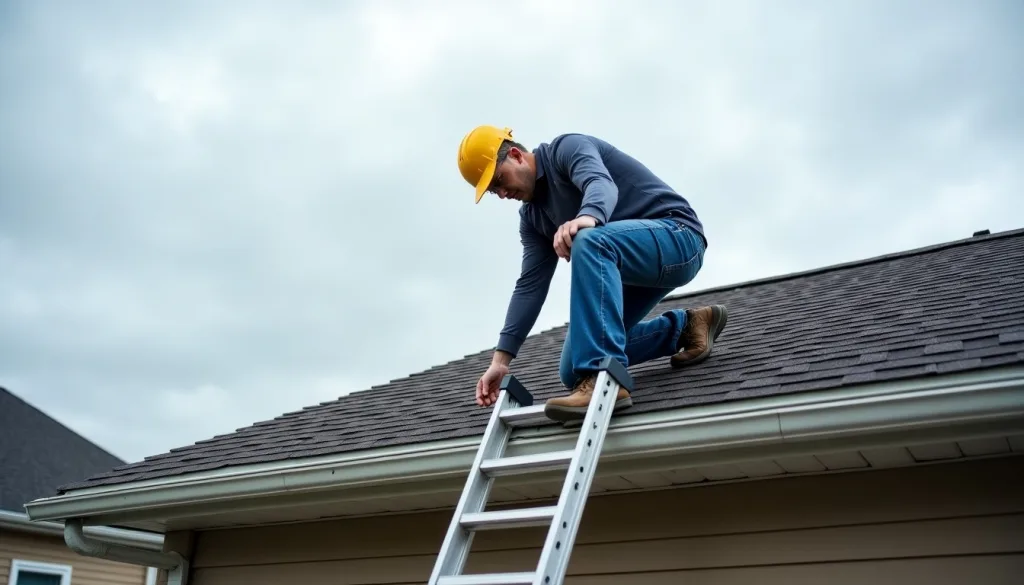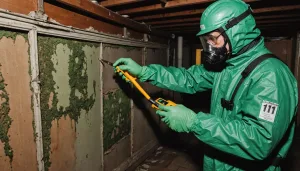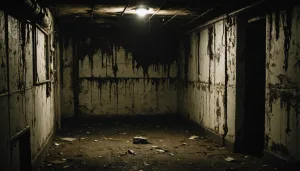When faced with the decision between roof repair and replacement, homeowners must begin by thoroughly evaluating the extent of roof damage. This critical step helps to ensure informed decisions that optimize both safety and financial investments.
Start by conducting a comprehensive visual inspection of the roof. Look for missing, cracked, or curled shingles, which are indicators of surface damage. Pay attention to areas where the shingles appear worn or discolored, as these may suggest underlying issues such as water infiltration or aging materials.
In addition to visible damage, consider the structural aspects of the roof. Check for sagging or signs of rot in the roof decking. Examine attic spaces for water stains, mold growth, or dampness, which could signal leaks or insulation problems that may not be immediately apparent from the exterior.
It’s also crucial to assess the age and overall condition of the roofing materials. Asphalt shingles typically last around 20–25 years, while metal, slate, and tile can endure longer. Knowing the materials’ expected lifespan aids in determining whether repair or replacement offers the best cost analysis over time.
In making an assessment, utilize a professional roofing guide to help interpret more subtle signs of damage. Professional roofers bring the expertise needed to accurately evaluate the severity of damage and can provide a detailed report with recommendations tailored to the individual needs of the home.
| Damage Indicators | Consider Repair | Consider Replacement |
| Missing or Damaged Shingles | Localized, few areas affected | Widespread damage across roof |
| Leaks | Small, isolated leaks | Multiple leaks or structural damage |
| Material Age | Under midpoint of lifespan | Near or at end of lifespan |
Thorough evaluations also involve examining weather impacts. Severe storms, wind, or hail may cause damage that compounds over time if not addressed. In cases of significant storm damage, a swift response is paramount to prevent further deterioration and higher costs in the future.
Ultimately, the goal is to balance immediate repairs with long-term needs. By carefully evaluating the roof’s condition, homeowners are better positioned to make informed decisions that protect their investment and ensure the home’s structural integrity.
costs involved
When considering the financial aspects of roof repair versus roof replacement, it’s important to conduct a thorough cost analysis to ensure the most economical decision. Here’s how you can approach the financial evaluation:
1. Estimate Repair Costs:
– Begin by obtaining multiple quotes from professional roofing contractors for the necessary repairs. These quotes should detail the type of repairs, labor, materials, and additional expenses.
– Compare the costs for minor repairs versus significant repairs. For example, fixing a few shingles will generally be less costly than addressing widespread water damage.
2. Calculate Replacement Costs:
– Request detailed estimates from contractors for a full roof replacement. This should include materials cost, labor, removal and disposal of old roofing, and any potential structural repairs.
– Consider the long-term savings of a replacement if your roof is nearing the end of its lifespan. Newer roofs often offer better insulation and energy efficiency, which can reduce utility bills.
3. Evaluate Hidden Costs:
– Look beyond immediate expenses. Factor in potential increases in insurance premiums if the roof’s condition increases the risk of damage.
– Include long-term maintenance costs. Older roofs may require frequent repairs, which can add up significantly over time.
4. Assess Financing Options:
– Explore different financing options if a full replacement is necessary. Home equity loans, personal loans, or contractor financing plans can make large upfront costs more manageable.
– Investigate available government incentives or rebate programs for energy-efficient roofing materials and installations, which can offset costs.
5. Conduct a Cost-Benefit Analysis:
– Use a homeowner guide to review the expected lifespan of different roofing materials. Align this information with your evaluation to determine the cost-effectiveness of repair versus replacement.
– Consider how each option affects the home’s resale value. A new roof can be a significant selling point, offering return on investment when selling the home.
By taking these steps, homeowners can make an informed decision that balances cost with long-term benefits, ensuring financial prudence and structural integrity.
lifespan and materials
When deciding between roof repair and replacement, understanding the lifespan and materials involved is crucial. Each roofing material comes with its unique longevity and characteristics, influencing long-term decisions.
Material Lifespan: Different roofing materials offer varying lifespans. Asphalt shingles, the most common choice, typically last 20–25 years. Metal roofs, known for their durability, can serve a home for 40–70 years. Slate and tile are other robust options, often lasting 50 years or more. Knowing these lifespans aids homeowners in making informed decisions and forecasts the need for repairs or replacement over time.
Material Advantages: Every roofing material has distinct benefits. Asphalt shingles, for instance, are economical and relatively easy to install. Metal roofs, while more expensive upfront, provide excellent energy efficiency and weather resistance. Slate and tile, though heavier and requiring a stronger structural support, offer unmatched aesthetic appeal and durability. Evaluating these features helps in aligning material choice with homeowner priorities and budgets.
Consideration of Advanced Roofing Solutions: New technologies in roofing materials can enhance energy efficiency and reduce environmental impact. Cool roofs, designed to reflect more sunlight and absorb less heat, help reduce cooling costs. Impact-resistant shingles provide added protection in severe weather conditions, potentially lowering insurance premiums. Understanding these options in conjunction with traditional materials can guide homeowners to a tailored solution meeting both their immediate and future needs.
Resale Value: The choice of material can also impact a home’s resale value. A well-maintained roof featuring durable materials can be a strong selling point, suggesting to potential buyers that the homeowner has prioritized long-term maintenance and care. For this reason, some homeowners may choose a more premium material as part of their investment strategy.
Engaging with these considerations, homeowners are poised to make strategic decisions using insights from their homeowner guide, aligning their choice with both personal needs and broader cost analysis goals. This approach not only preserves the structure’s integrity but also enhances the home’s value and enjoyment over time.
climate considerations
Climate plays a significant role in deciding between roof repair and replacement. Different climates impose unique challenges on roofing materials, influencing their longevity and performance. Homeowners should consider these climatic influences as part of a comprehensive cost analysis when making their decision.
In regions prone to severe weather, such as hurricanes or heavy snowfall, roofs must withstand substantial stress and potential damage. Roofing materials like metal or slate, known for their durability and resilience, are often better suited to these environments. In these cases, a replacement with more robust materials might be the wiser investment to ensure long-term protection and reduce maintenance costs.
Conversely, in areas with milder climates, asphalt shingles may suffice, allowing homeowners to prioritize repair over replacement, especially if budget constraints are a concern. However, even in milder regions, factors like heavy rainfall or intense sun exposure can cause gradual wear, highlighting the importance of regular inspections to address minor issues before they escalate.
Temperature fluctuations are another consideration. In regions where temperatures vary substantially between seasons, roofs undergo expansion and contraction. Materials like metal or composite shingles, which adapt well to these changes, can help prevent damage. Engaging with a homeowner guide can help in evaluating how different materials respond to local climate conditions, ensuring the choice aligns with long-term goals.
Homeowners should also consider the environmental impact and energy efficiency of roofing materials. Cool roofs, designed to reflect more sunlight, can be particularly beneficial in hot climates, reducing cooling costs. This not only contributes to lower energy bills but may also offer incentives or rebates, positively influencing the overall cost analysis.
By thoroughly assessing climate considerations, including potential weather extremes and temperature shifts, homeowners can strategically align their roofing decisions with environmental demands. This approach ensures a resilient, efficient, and cost-effective solution that enhances both the home’s comfort and financial investment.
professional advice
Seeking professional advice is a vital step in making the best decision between roof repair and replacement. Engaging with experienced roofing contractors not only provides homeowners with an expert evaluation of their roof’s condition but also offers access to tailored solutions that align with individual needs and budgets.
Professional roofers bring a wealth of knowledge in assessing damage, identifying potential future issues, and offering cost-effective recommendations. They can distinguish between minor repairs and significant damage that necessitates a replacement, helping homeowners navigate the complexities involved in such decisions. Their insights contribute to a comprehensive cost analysis, ensuring that any financial investment aligns with the roof’s long-term performance and the homeowner’s objectives.
Moreover, roofing professionals can provide guidance on various materials and technologies available in the market. This includes advice on the benefits and drawbacks of options like metal, asphalt, or slate, as well as advanced solutions like energy-efficient cool roofs. By considering local climate conditions, energy efficiency, and aesthetics, these professionals can recommend materials that both enhance the home’s value and provide resilience against environmental challenges.
Involving experts also ensures compliance with local building codes and regulations, avoiding potential legal issues that could arise from non-compliance. With a professional’s assistance, homeowners can confidently proceed, knowing their decision is supported by the insights and experience necessary to safeguard their investment.
In conclusion, deciding between roof repair and replacement requires a balanced assessment of various factors including damage evaluation, costs, material lifespan, climate influences, and expert advice. By examining these elements, homeowners can make informed decisions that ensure their roof’s integrity, enhance their home’s value, and protect their financial investments in the long term.





